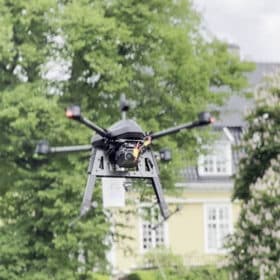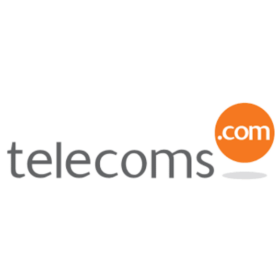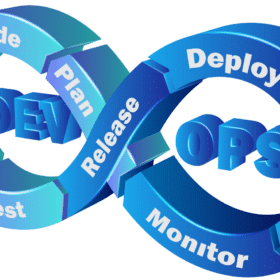5G Core: Stability and Agility – Foundation for Monetization
The extreme focus on network stability led to the tremendous success of 8.2 billion mobile subscriptions in 2021. Stability made the core network a revenue generating machine. But what worked in the past does not always work today, as we see many operators struggling to secure a return on their 5G investments.
Revenues are flat because operator differentiation is limited, resulting in the delivery of more data for less income. The focus on stability provided a steady revenue stream, but the average revenue per subscriber (ARPU) keeps declining. As a result, many operators are devising monetization strategies.
A successful monetization strategy can only be built on value, for which consumers and enterprises are willing to pay. 5G adds new technologies that operators can use to add value to consumers and enterprises, for example network slicing, ultra-low latency, concealment of subscriber identity, etc.
Technology is one thing, transforming the technology into revenue requires a paradigm shift and more business innovation. This also brings agility to the mix, because not all business outcomes are known upfront. And operators need to walk before they can run, and accept learning by trial and error. At the same time the stability and reliability of the network must be maintained, to hold on to the revenue streams from legacy networks.
Operators need to accelerate the introduction of new functions like the Network Exposure Function, which enables enterprises to resell quality of service to their customers (B2B2C). For example, an operator may sell quality of service to a gaming company, which in turn resells this as quality of experience to gamers who are willing to pay extra for a guaranteed service on the latest action games. While this business case may sound interesting, its success is not guaranteed. Therefore, operators willing to try this path should take a more agile approach in customer validation and investments.
In other words, to get a slice of the $$ moving into 5G, a mix of both stability and agility is needed to unlock the monetization puzzle. The combination of highly available mobile connectivity technology, and 4G/5G interworking, augmented by being agile with cloud native services, can provide 5 nines network reliability, low latency (URLLC), and new device (IoT) connectivity options to the expanding Enterprise market [1].
Private 5G – charting a path from low cost to a resilient solution?
Private 5G and enterprise use cases are moving faster than 5G standalone (SA); as a green field scenario, operators can design new values that enterprises are willing to pay for, for example, Quality of Service (QoS) and reliable connectivity is very important when an outage can cost up to $300K per hour [2].
Operators that want to secure revenues here must make sure to focus on the added value, which is the QoS achieved by private 5G. There has been a lot of buzz on technology like extreme small footprints and low cost 5G solutions, but this cost focused approach is missing the point of 5G completely and could utterly fail. This is not just scaremongering – it could be a reality in two core systems provided by some vendors in a race to the bottom on small footprint systems.
The value operators deliver is stability. As such, critical factors like predictability, low latency and high throughput, rainy-day scenario planning, capacity planning, anomaly and threat monitoring (a telecom operator’s bread and butter), have all got to be on the agenda. These aspects mean that the core connectivity provided is of sufficient quality and resiliency that it reduces the risk profile of the end customer. Enea is an advocate of operators using their years of operational capability to deliver the next generation of 5G network slices, service exposure and connectivity to the fast-moving 5G enterprise market.
The resiliency challenge can be solved as a secure quality-based connectivity framework that can be packaged for different private and enterprise environments. As a supplier in this environment, Enea delivers software and solutions for both sunny and rainy-day scenarios. Ultimately, it is not just about the connectivity, it is also about who or what is connecting. Case in point, can the telecom provider package the connectivity (4G & 5G options) to provide a compelling service in a challenging IoT environment with a new class of device (NR-Lite)?
Enter the IoT world
A natural extension of private and enterprise 5G environments is connecting more devices. However, in the environment, unexpected issues on connectivity, security, and compliance may be encountered. We believe that this is one of the reasons why in the market of smart homes, focusing on cost is only reaching tech-savvy enthusiasts. For the average homeowner all that IoT is simply too much hassle.
Therefore it’s worth considering solutions that have simplicity, stability, scale and security designed in. Operators are perfectly equipped to deliver the last mile, while taking advantage of Hyper Cloud Providers’ environments to deliver global IoT connectivity at the pace needed to meet enterprise demand.
There are options that allow telecom operators to automate and scale their business engagement to multiple small and medium corporate customers as well as enabling an easy to configure, secure, and scalable environment for each enterprise.
Enterprises see the value of simple, secure, reliable, and stable IoT connectivity from the operators’ datacenters to the Enterprise IT premises. Operators like Telia and Swisscom have leverage on Enea control and secure connectivity solutions to transform this value into new revenue streams in an agile way.
Where does this leave us?
Monetization strategies are at the center of forward-looking operators because ARPU is declining. Whilst predictable revenue streams from network investments happened in the past, revenues are stalling because of a lack of service differentiation. Technologies to create value are available today. An agile mindset, doing business development at a smaller scale, is needed to allow service providers to learn fast what works and what does not. However, this should be balanced with what telecom services do best – delivering robust, reliable and resilient functions. In balancing these trade-offs – rather than just talking about them – Enea has been providing transformation technology innovation and product solutions to boost 5G monetization for operators across the globe.
[1] Wireless Trends in Enterprise Connectivity – ABI Research August 2022
[2] David Cappuicco, Gartner




